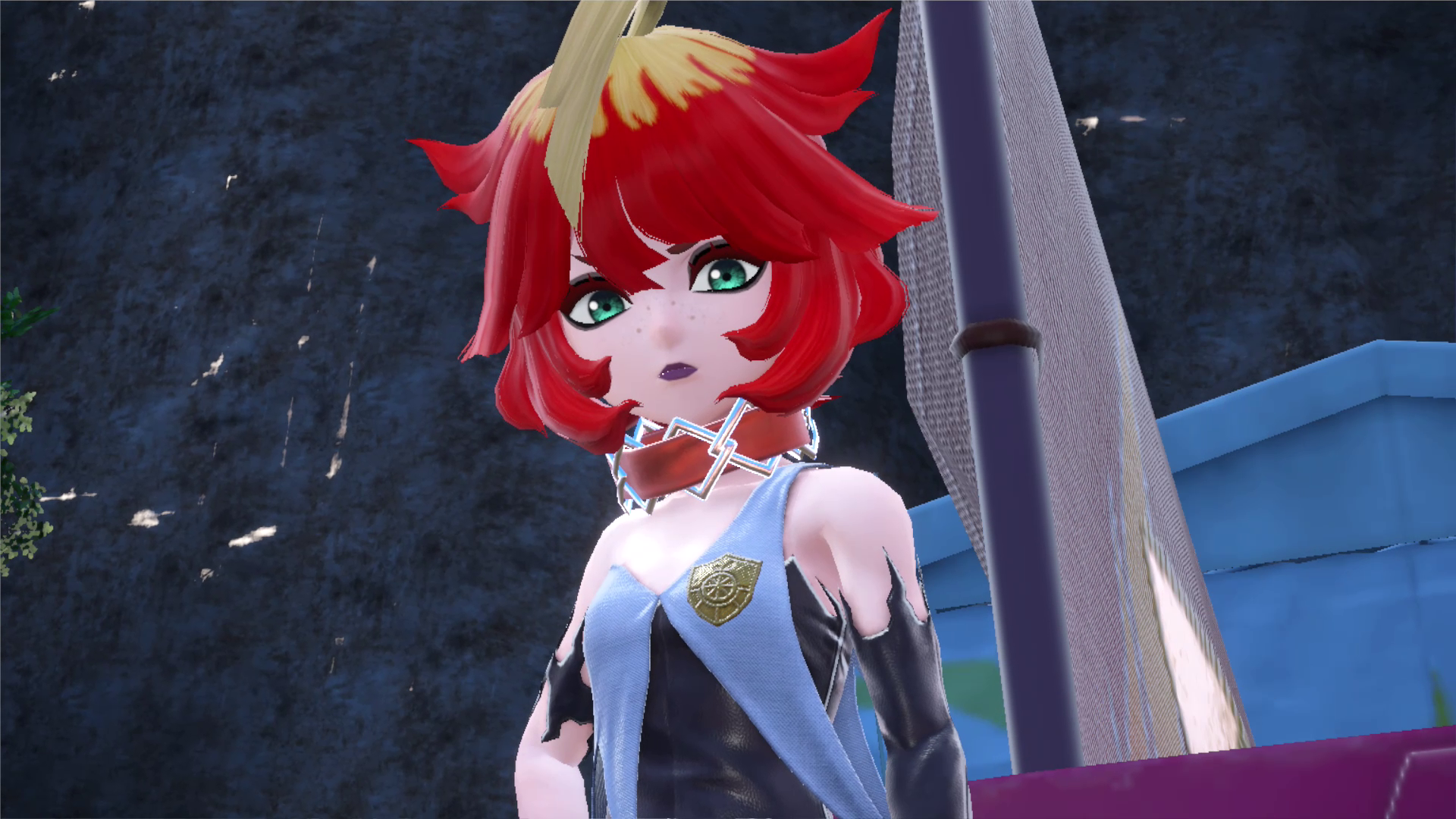Pokémon Scarlet/Violet hands-on: A big step forward for a classic series
Pokémon Scarlet/Violet offers a substantial open-world, with plenty of worthwhile content

UPDATE, 10/21: Tom's Guide has updated this article to prevent possible story spoilers regarding the Team Star faction.
With Pokémon Scarlet/Violet, Nintendo has put an open-world spin on a classic franchise, just as it did with The Legend of Zelda: Breath of the Wild. While I don’t know whether the gamble will ultimately pay off, I can say that it makes the Paldea region a pretty inviting place to hang out for an hour or two.
Rather than walking through a grassy patch between one town and another, you can hop on a motorcycle/Pokémon hybrid, climb up mountains, glide across waterways and basically go anywhere within your line of sight. You can follow a character-driven story, or compete with other Pokémon trainers, or hunt down giant creatures, or do absolutely none of that.
In short, Pokémon Scarlet/Violet lets you do pretty much whatever you want. And after decades of fairly linear Pokémon games, the freedom will feel either liberating or intimidating, depending on your playstyle.
I recently had a chance to go hands-on with Pokémon Scarlet at a Nintendo press event, and spent about an hour and a half with the game in total. During that time, I explored the Paldea region, battling and catching Pokémon as I went. I also got a hint of what the game’s three main story arcs had to offer.
While I don’t think Pokémon Scarlet will tell the greatest story in gaming history, I do think it will give both novice and veteran Pokémon trainers plenty of reasons to see this substantial adventure through to the end.
Exploring Paldea

Nintendo started me off toward the beginning of the game, but with a variety of tools and Pokémon at my disposal that players won’t earn until later. As such, don’t be disappointed if you have to work for some of your fun in the full release.
The first thing I noticed was that I had a versatile mount at my disposal: an odd-looking wheeled Pokémon called Koraidon. (Pokémon Violet will have a similar mount called Miraidon.) I admittedly haven’t played a Pokémon game since the Red/Blue variants back in the late ‘90s, but Koraidon seemed like a big step up over a bicycle. In addition to dashing across the open world, Koraidon could also climb almost any vertical surface, then glide great distances.
(Zelda fans may also be keen to note that Koraidon has no stamina bar, so you won’t have to worry about falling down when you’re halfway up a mountain.)
Although the press demo only covered the first part of the open world, the map looked huge, with grasslands, mountains and towns to explore. Due to time constraints, I spent most of my demo following story threads, but the open world seems to house plenty of side quests and secrets, including Pokémon to catch, trainers to challenge and resources to collect.
Speaking of catching Pokémon, the process is roughly the same as it’s always been. You can encounter a variety of wild Pokémon roaming the open world. Touching them will initiate combat — although you can also send out a single Pokémon to fight them automatically, obviating the need for a protracted battle.
You can have up to six Pokémon on your roster at any given time, and send them into battle one-by-one against wild Pokémon, or two-by-two against certain trainers. Each Pokémon can learn four techniques, and the game will tell you whether your technique is strong or weak against its intended target. Reducing an enemy Pokémon’s health all the way will render them unconscious; reducing an enemy Pokémon’s health most of the way will make it easier to catch them in a Poké Ball. This system hasn’t radically changed in the past few decades, but perhaps it doesn’t need to.
My only big issue during exploration was that the frame rate was usually imperfect — and at certain points, it was almost unwatchable. Out in the open world, the game has to render a lot of assets at once, which made the camera shudder and jerk every time I rotated it. During one sequence, when I had to get 10 Pokémon in a town to follow me, their animation looked more like a slideshow than a big-budget video game.
Team Star, Victory Road and Path of Legends

Pokémon Scarlet/Violet will have three main plot threads to follow. Victory Road is the traditional Pokémon narrative, in which you collect monsters, pit them against various Gym leaders, collect badges and move onto the next region. Path of Legends is where you’ll hunt down unusual Pokémon, such as the giant Klawf in my demo. (It was essentially a mechanized crab; I assume that some of the legendary creatures later on will look a little more intimidating.)
Team Star is where I elected to focus most of my energy. At a previous Nintendo briefing, a representative told me that the Team Star arc would resemble a school anime, with various factions of students working with and against each other to achieve academic excellence, or popularity, or — in this case — Pokémon mastery. This sounded a bit more character-driven than some previous Pokémon stories, and it piqued my interest.
To kick things off, I found Team Star’s base, right outside of town. These rogue students seem to be the “villain” faction in the game, although I didn’t have the proper context to know why. Before I could challenge the local leader, Mela, the Team Star members challenged me to defeat 30 of their Pokémon within just a tight time frame. This is where the “send your Pokémon out to battle automatically” feature proved its worth. I imagine this will cut down on a lot of busywork, especially for players who like to level-grind their Pokémon teams early on.
The open world seems to house plenty of side quests and secrets, including Pokémon to catch, trainers to challenge and resources to collect.
The battle against Mela itself was suitably challenging, although veteran Pokémon trainers won’t find too many surprises here. I analyzed her Pokémon; I chose creatures in my own roster that could take advantage of their weaknesses; I switched things up a few times when she changed combatants, or afflicted mine with particularly damaging status effects.
I also had a chance to try out Scarlet/Violet’s new “Terastallize” feature, in which players use a Tera Jewel to make Pokémon shiny and gemlike. While I didn’t catch the specifics of how Terastallizing works, I did learn that Tera Jewels require recharging after each use, and that the phenomenon makes Pokémon stronger for a limited time in battle. This could make the game a bit easier when you use it, or a bit more difficult if your opponents do.
In general, the Team Star quest gave me a little more insight into Pokémon Scarlet's story, which seems to have a different feel from most of the previous games. The narrative may not be enough to entice fans of more story-driven Japanese RPGs, but it’s at least something for Pokémon fans to sink their teeth into.
Tera Raids

The final piece of Pokémon Scarlet/Violet gameplay I saw was a Tera Raid. This multiplayer feature lets players create impromptu teams to take on difficult Pokémon, and rewards them with a chance to catch the beasts.
In my demo, the Nintendo representatives instructed us each to catch one wild Pokémon, then go into a Tera Raid battle with almost no preparation. This was perhaps to emphasize just how difficult Tera Raids can get — although perhaps it was also to show that the feature is relatively accessible, and not confined to high-level endgame play.
Three other players and I were able to jump into a Tera Raid instantly from the game’s main menu, and our foe was a powered-up Wingull. Normally, this Water/Flying-type Pokémon doesn’t seem like much of a threat, but its powered-up Tera Raid version was showed no mercy. It could wipe out most of our Pokémon in just a few hits, and didn’t seem to take much damage.
I hope the Tera Raids remain accessible for more casual fans, rather than locking rare Pokémon or items behind a tough multiplayer challenge.
This is where coordinating our attacks came in handy, as we could issue commands to each other via a simple in-game chat menu. Some of us attacked; others built up our defensive capabilities or tried to inflict status effects. When our Pokémon got knocked out, they would revive a few seconds later — but the revival countdown increased every time.
In the end, we won the Tera Raid, and had a chance to catch Wingull for ourselves. The Tera Raids are an intriguing feature, but I imagine that players won’t be able to stumble through the high-level ones quite as well. Still, I hope the Tera Raids remain accessible for more casual fans, rather than locking rare Pokémon or items behind a tough multiplayer challenge.
Pokémon Scarlet/Violet outlook

After an hour with Pokémon Scarlet, I’m not convinced it will win over series skeptics. I do think that returning players will appreciate the open-world features and gameplay enhancements, however, to say nothing of all the new Pokémon they can catch.
Pokémon Scarlet and Violet will be out on November 18 for the Nintendo Switch, and will cost $60 apiece. Tom’s Guide will have a full review closer to launch.
Sign up to get the BEST of Tom's Guide direct to your inbox.
Get instant access to breaking news, the hottest reviews, great deals and helpful tips.
Marshall Honorof is a senior editor for Tom's Guide, overseeing the site's coverage of gaming hardware and software. He comes from a science writing background, having studied paleomammalogy, biological anthropology, and the history of science and technology. After hours, you can find him practicing taekwondo or doing deep dives on classic sci-fi.

